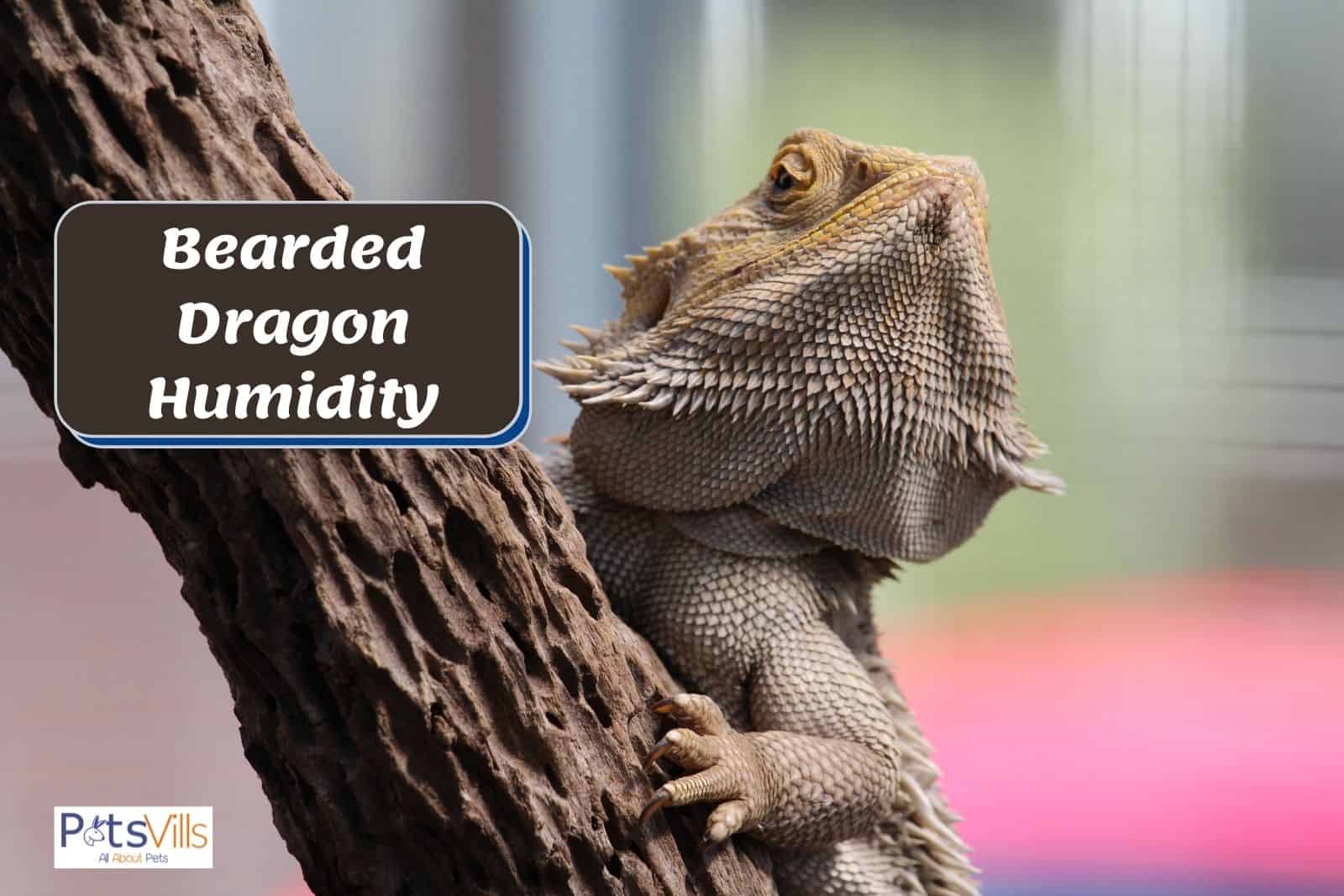Are you wondering how to lower humidity in the bearded dragon tank?
That’s an excellent question because maintaining humidity levels is essential when caring for bearded lizards.
So, keep reading to learn about the ideal humidity for bearded dragons.
Table of Contents
What Should the Humidity be for a Bearded Dragon Tank?
Bearded lizards make great pets and aren’t as hard to maintain as novice owners imagine because lizards are very self-sufficient. But keeping an eye on the humidity in the enclosure is vital.
High or low levels of moisture are bad for bearded lizards and can lead to a variety of health problems and prevent normal skin shedding.
But what’s the ideal humidity for bearded dragons? Let’s find out.
Ideal Humidity Levels for Bearded Lizards
Do you know where bearded lizards come from? They live in Australia, which has a dry climate and sparse water sources.
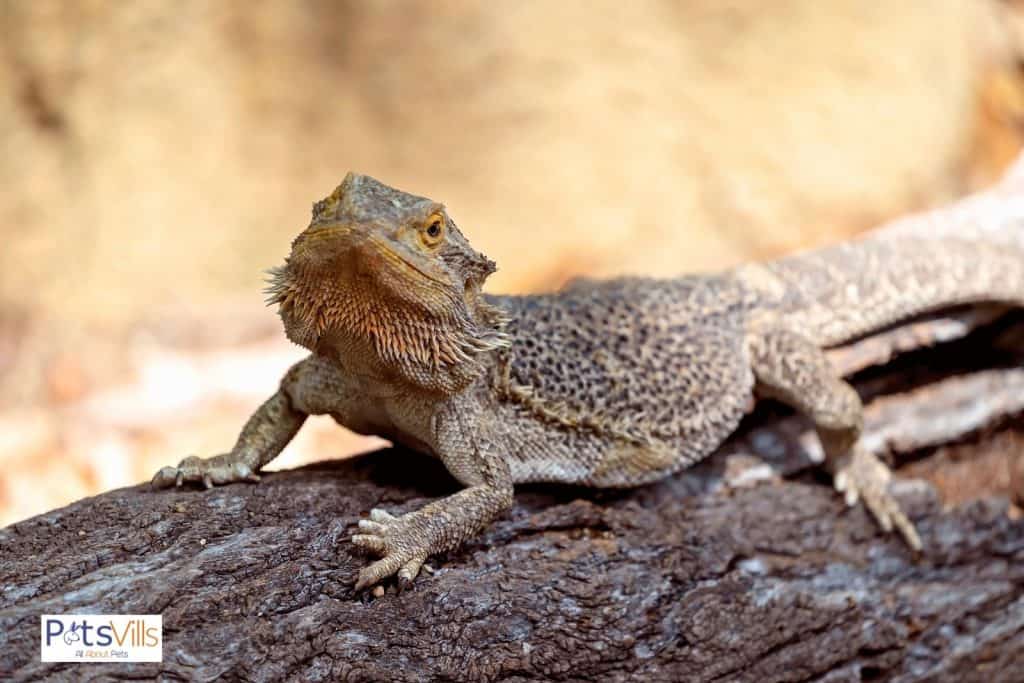
Since bearded lizards have evolved to survive this arid environment, anything outside their comfort range can cause health problems.
RSPA explains, “Low humidity is essential for beardies to prevent skin or breathing problems.” [1]
As such, when you raise these lizards in captivity, it’s essential to keep the humidity levels close to those in their natural habitat.
Most reptile experts say that 30% to 40% is the ideal humidity level for an adult bearded dragon. Expert Simon Girling also says, “a relative humidity of between 25–50% is often adequate.” [2]
How to Measure Humidity in the Tank
To measure the moisture levels inside your bearded dragon enclosures, you’re going to need a special tool – a hygrometer, also called a humidity gauge.
In general, you can choose between two types of hygrometers – a digital hygrometer or an analog one:
- Digital gauges are accurate since they use a probe to measure the humidity and have an easy-to-read display to check readings. But they’re expensive and not so easy to install.
- On the other hand, analog hygrometers are cheap, but they’re not as accurate as digital ones. Still, they’re an excellent choice for measuring moisture.
- To take an accurate humidity reading, you need at least two hygrometers. One hygrometer isn’t enough because readings can be in normal ranges on one side and low/high on the other.
Where Should I Place a Hygrometer?
Once you purchase hygrometers, you have to place them inside your bearded lizard’s enclosure. But it’s not a matter of putting the gauge in whatever part of the tank you choose:
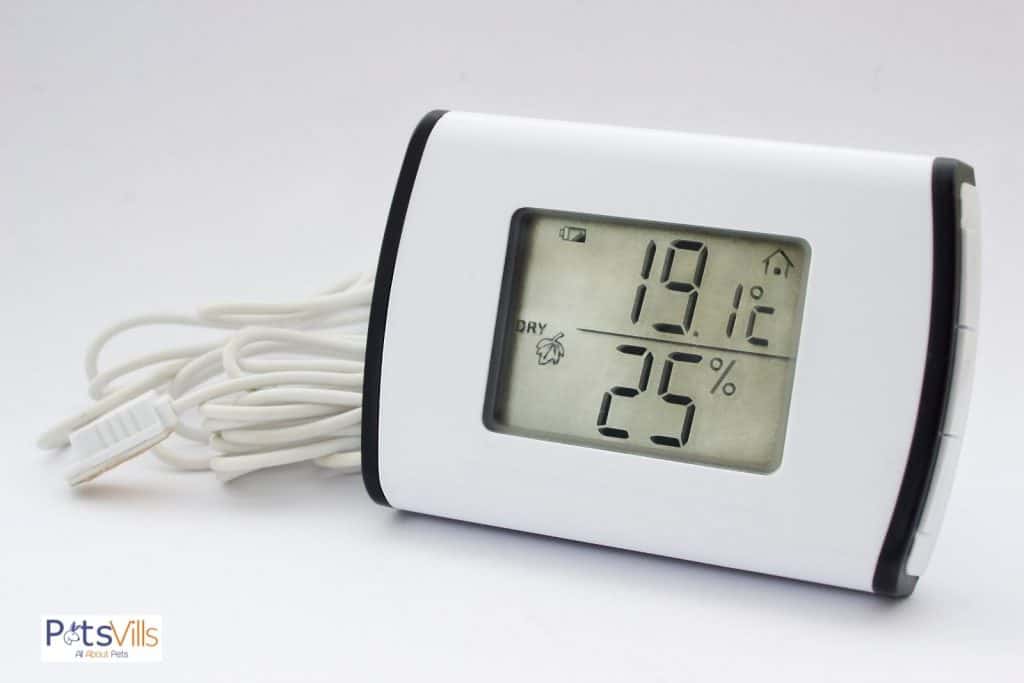
- For the most accurate reading, place one gauge on the cool side of the enclosure, the other – on the hot.
- If you have set up the heat and lighting correctly, you can use one hygrometer on the back wall. Place it centrally for an accurate measurement.
- Don’t put the gauge or probe in live plants, over the water bowl, near heat lamps, or corners since the excess water vapors will give an inaccurate reading.
- Be careful not to let the hygrometer’s probe dangle in the tank, or your curious beardie can try to eat it.
Curious about your baby bearded dragon’s nighttime lighting needs? Read our article ‘Do Baby Bearded Dragons Need Light at Night‘ for all the information you need!
How to Lower Humidity in the Bearded Dragon Tank
So, you notice that the hygrometer shows excess moisture levels inside your bearded dragon habitat. What should you do to lower the level and prevent potential health problems?
Here are 8 care tips for dealing with extra humidity and ensuring your bearded lizard’s comfort.
#1 Move the Water Dish
Do you know which is the biggest source of humidity in your lizard’s enclosure? It’s the water bowl, especially if you place it near a heat source.
Think about it. The heat from the light bulb makes the water vapor, which increases the overall humidity of the air.
So, while bearded dragons need a shallow water dish to drink water and regular baths to stay hydrated, you should relocate it to a part of the tank where it won’t create extra moisture in the air.
If you live in a humid climate, you can leave the water dish inside the tank for a couple of hours before removing it to prevent water evaporation.
Related: Do Bearded Dragons Need a Water Bowl?
#2 Change the Water Dish
Sometimes the problem is not the position of the water bowl but its size. The bigger the bowl, the more water it holds. And once the water evaporates, it will raise the moisture levels.
#3 Consider a Dehumidifier
Purchasing a dehumidifier is the easiest way to lower the humidity in your bearded dragon’s tank. These machines pull the humid air, removing the excess moisture from the air.
Moreover, dehumidifiers are easy to use. You just have to place them inside the room housing your bearded lizard’s enclosure and turn it on.
#4 Change the Substrate
In general, a loose substrate is bad for your bearded lizards. That’s because it’s easy for lizards to ingest it and get impacted.
Moreover, some types of loose substrates, such as wood shavings, wood chips, soil, and coconut fiber, retain moisture, which raises the amount of water in the air.
So, try switching the type of substrate in the habitat to a reptile carpet, ceramic tiles, or newspapers.
#5 Increase Ventilation
Increasing ventilation and air circulation will remove the excess moisture and keep it without suitable ranges for your pet:
- Open the window
- Install a window air conditioner
- Use ceiling or floor fans
- Relocate the enclosure to a more ventilated area
If you’re using a glass/plastic cover for the tank, switch to a mesh lid. A mesh cover is better for maintaining proper airflow.
#6 Reduce Misting
Most reptile specialists recommend misting as a way to keep your bearded lizard hydrated since these animals aren’t used to drinking water from a bowl.
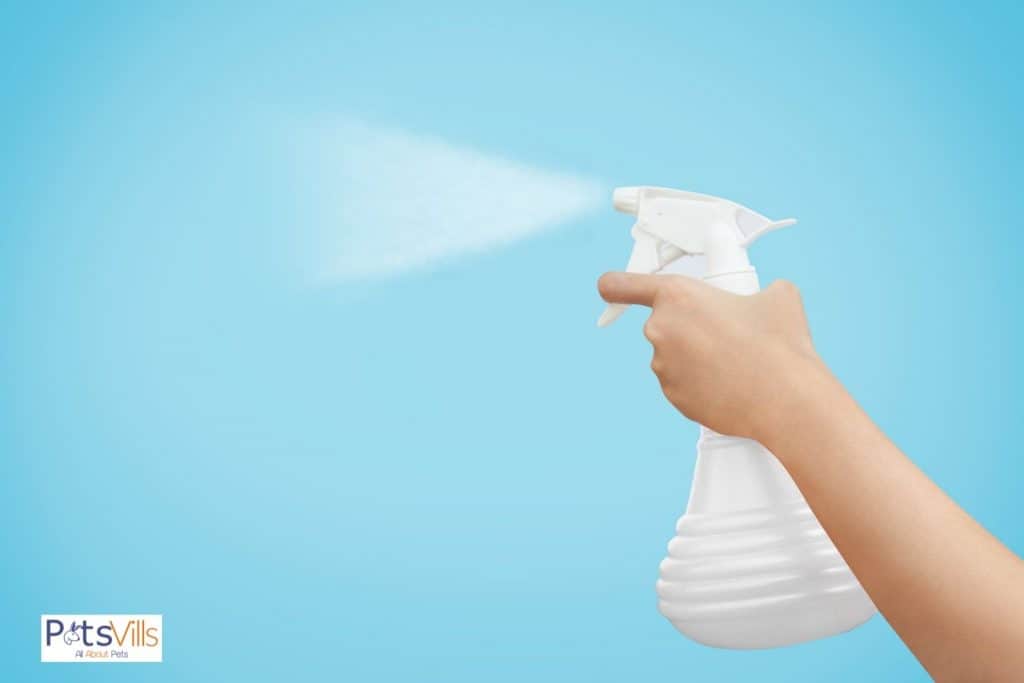
But if you’re misting your lizard’s enclosure, plants, and toys too often, the water droplets are raising the moisture level in the room. So, reducing misting can help lower humidity.
Related: How To Mist a Bearded Dragon
#7 Use Rice
Rice absorbs moisture, so it’s a cheap way to extract the extra water from the air. Simply place a sock with rice or a rice bag on the cold side of the tank.
#8 Remove Sources of Additional Moisture
Live plants and foliage can increase the moisture level in your pet’s tank. So, remove the plants to control the levels.
Take a look at this useful video:
How to Lower Humidity in Bearded Dragons Tank at Night?
Have you noticed that the humidity levels are perfect during the day but high during the night? Then a drop in the temperature level can explain the issue.
It gets cold during the night, so the air can’t hold the same amount of moisture. As a result, the relative humidity inside your bearded lizard tank increases.
So, adjusting the UVB bulb temperature or switching on the air conditioner is one of the ways to handle the increase in moisture during the night.
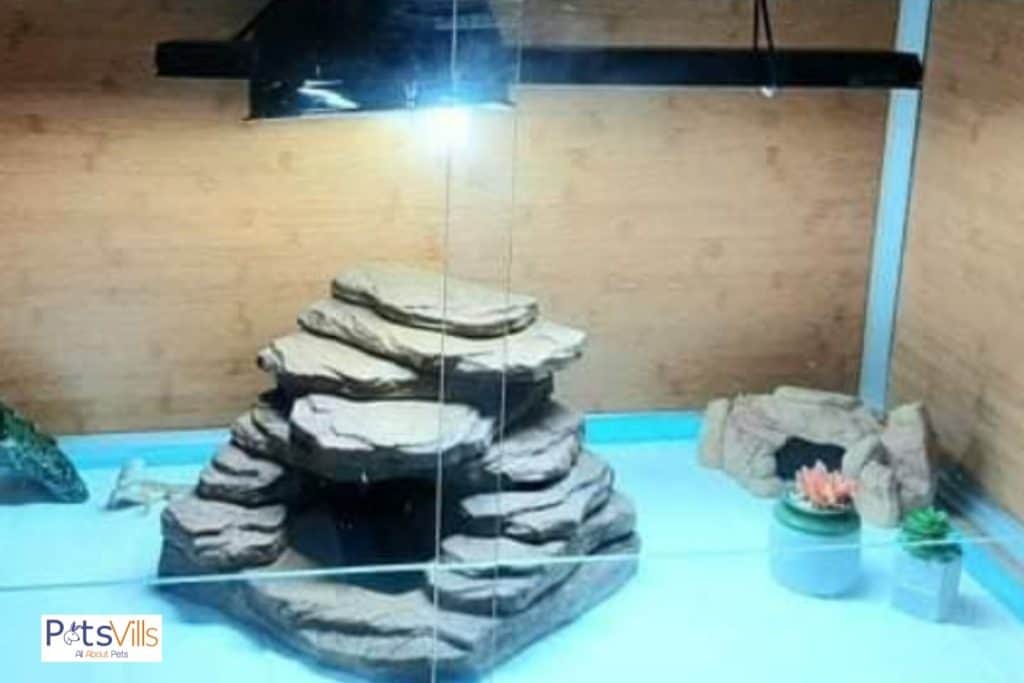
Related: What Temperature Should a Bearded Dragon Tank Be?
How to Increase Humidity in Bearded Dragon Tank
Increasing the tank humidity is very easy if you follow these easy care tips:
- Place a large water dish inside your adult bearded dragon habitat. The more water there is, the more moisture will evaporate in the air.
- Move the water dish to the hot side under the bulb to increase water vapors.
- Add plants and foliage to the habitat. Plants generate moisture, which will increase the overall humidity inside the tank.
- Increase misting. If you’re spraying your beardie’s tank 2-3 times a week, you can increase to daily misting sessions.
- Use a humidifier.
Check out this video about the right bearded dragon temperature.
Dangers and Health Considerations When the Humidity Isn’t the Ideal One
As I already mentioned, keeping the ideal humidity level for a bearded dragon is vital because low or high levels can cause a variety of health issues.
But let’s see in detail the consequences of low/high moisture levels for reptiles.
Low Humidity Health Risks
When the level of humidity is too low, your bearded dragon is in danger of:
- Blocked femoral pores.
- Shedding problems. A dry environment makes it harder for your pet to shed its skin, which can cause circulation problems.
- Dehydration, kidney problems, and urinary tract infection can be deadly, especially if you don’t notice them on time.
- Non-Obstructive Dystocia. Female bearded lizards need enough moisture to lay eggs.
Some of these health issues are easy to remedy, but some of them will require an urgent visit to your vet.
Excess Humidity Health Risks
A moisture level over 50% in your reptile tank is too high for your pet. Beardies can’t live in such a humid environment because it promotes mold, mildew, and bacterial growth.
So, excessive moisture puts bearded lizards at risk for a respiratory infection. Other health risks include:
- Bacterial infections
- Fungal infections
- Nasty skin problems
Since your adult dragon will need vet attention if they develop respiratory issues, keeping the moisture within the recommended ranges is best.
Bearded Dragon Humidity FAQs
Is 70 Humidity Too High for a Bearded Dragon?
Yes, 70% is too high for bearded lizards. Such high levels of moisture in the enclosure increase the risk of respiratory, bacteria, and fungal infections.
Can You Put a Dehumidifier in a Bearded Dragon Tank?
Yes, you can put a dehumidifier in your beardie’s tank as long as it’s pet-safe. Choose a model that you can install easily, and don’t forget to check the hygrometer to avoid high moisture levels.
Do Baby and Adult Bearded Dragons Need the Same Humidity Levels?
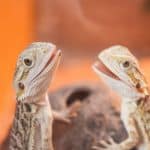
While baby dragons and adult dragons have different nutritional needs, they live in the same environment. As such, they need low moisture levels to thrive.
Conclusion
It’s not hard to lower the humidity inside your bearded dragon’s tank. You just have to learn the factors that influence the moisture level in the environment and have a hygrometer on hand to measure it.
Don’t panic over short periods of high humidity. It happens even to the best reptile owners, and it’s unlikely it will harm your beardie as long as you take measures.
References:
- 1. Bearded dragon CARE SHEET ENVIRONMENT [Internet]. Available from: https://www.rspca.org.uk/documents/1494939/0/Bearded+Dragon+Care+Sheet+%28PDF+350KB%29.pdf/151bb6df-1c35-a484-6de8-bffed4985abf?t=1556100899951
- 2. Girling S. Download Limit Exceeded [Internet]. citeseerx.ist.psu.edu. Available from: https://citeseerx.ist.psu.edu/viewdoc/download?doi=10.1.1.455.7369&rep=rep1&type=pdf
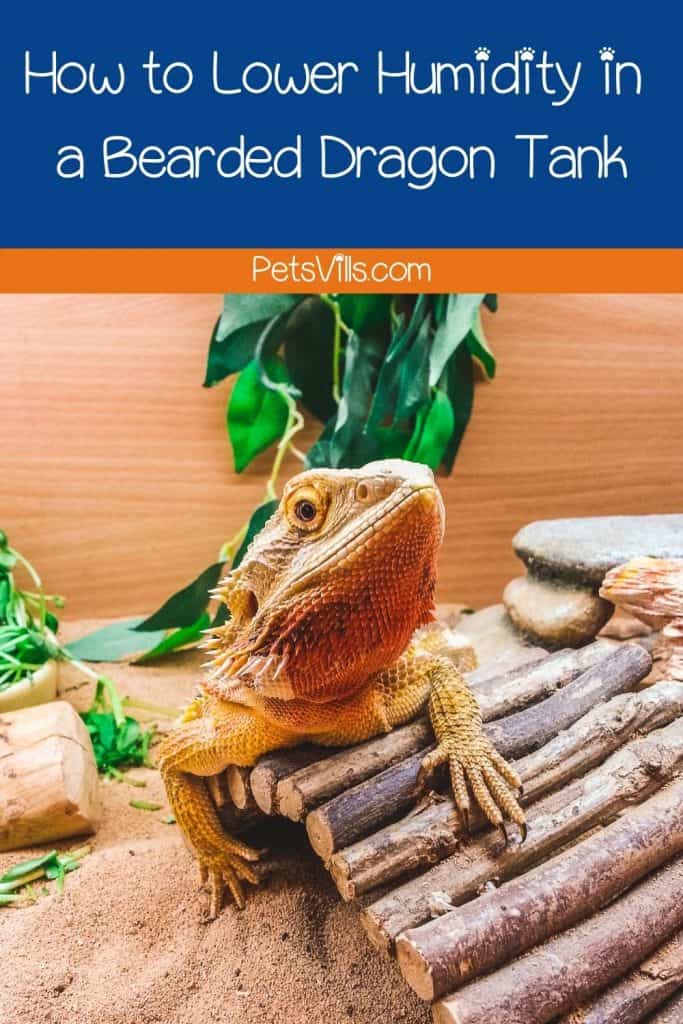
What do you think about these tips on how to lower humidity in a bearded dragon tank? How do you do it? Share your experience in the comment section.
Grigorina grew up surrounded by animals – dogs, cats, cows, goats, sheep, and horses and that has shaped her into what I am today – a crazy cat lady who always has a place for one more cat (or a dog). She has two female cats – Kitty and Roni, and two tomcats – Blacky and Shaggy, but she also feeds her neighbors’ cats when they come for a visit. I just can’t say no to them. Follow her on FACEBOOK AND INSTAGRAM
Read her latest articles HERE
Learn more about her

